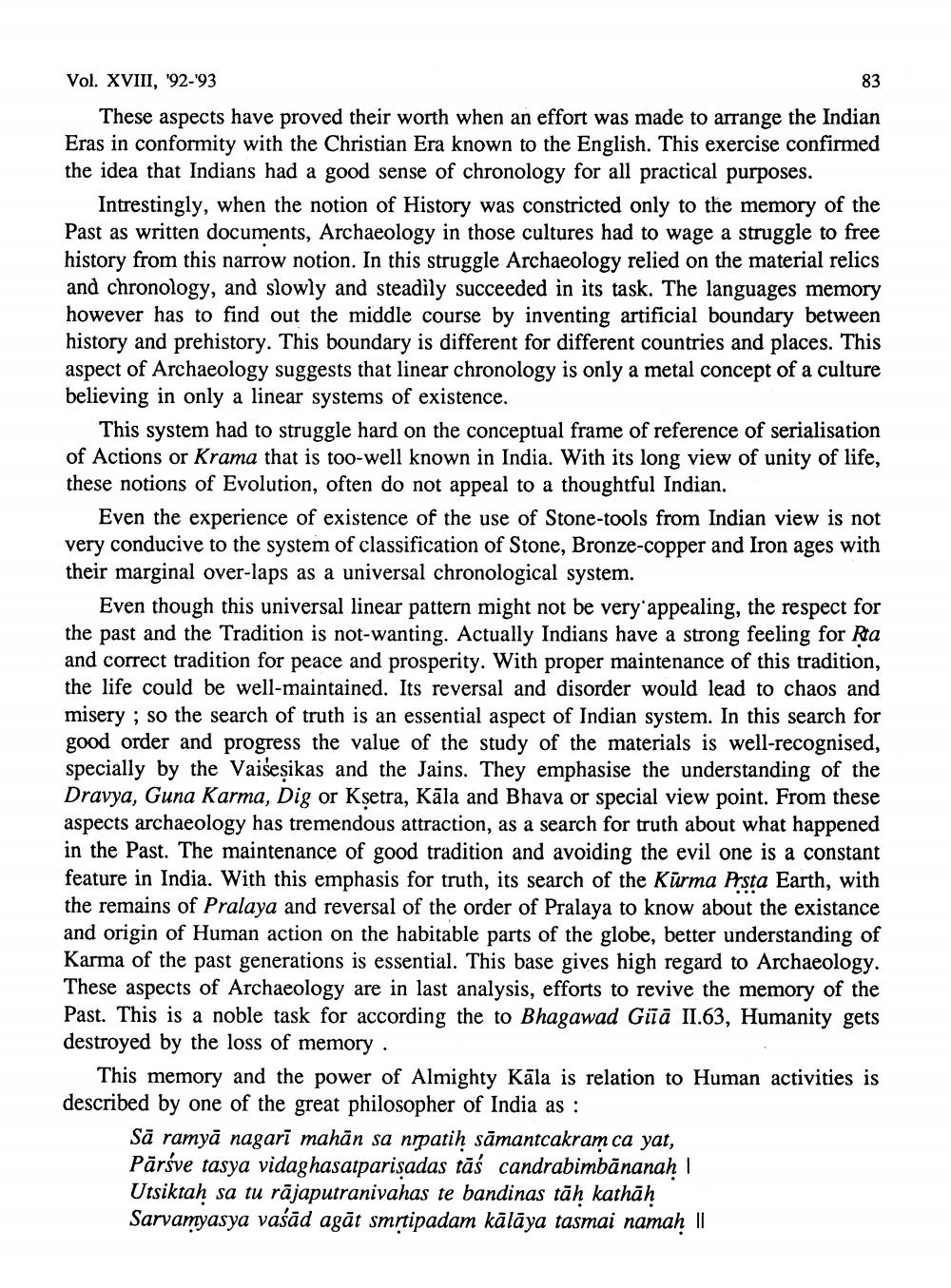________________
Vol. XVIII, '92-'93
83 These aspects have proved their worth when an effort was made to arrange the Indian Eras in conformity with the Christian Era known to the English. This exercise confirmed the idea that Indians had a good sense of chronology for all practical purposes.
Intrestingly, when the notion of History was constricted only to the memory of the Past as written documents, Archaeology in those cultures had to wage a struggle to free history from this narrow notion. In this struggle Archaeology relied on the material relics and chronology, and slowly and steadily succeeded in its task. The languages memory however has to find out the middle course by inventing artificial boundary between history and prehistory. This boundary is different for different countries and places. This aspect of Archaeology suggests that linear chronology is only a metal concept of a culture believing in only a linear systems of existence.
This system had to struggle hard on the conceptual frame of reference of serialisation of Actions or Krama that is too well known in India. With its long view of unity of life, these notions of Evolution, often do not appeal to a thoughtful Indian.
Even the experience of existence of the use of Stone-tools from Indian view is not very conducive to the system of classification of Stone, Bronze-copper and Iron ages with their marginal over-laps as a universal chronological system.
Even though this universal linear pattern might not be very appealing, the respect for the past and the Tradition is not-wanting. Actually Indians have a strong feeling for Rta and correct tradition for peace and prosperity. With proper maintenance of this tradition, the life could be well-maintained. Its reversal and disorder would lead to chaos and misery ; so the search of truth is an essential aspect of Indian system. In this search for good order and progress the value of the study of the materials is well-recognised, specially by the Vaisesikas and the Jains. They emphasise the understanding of the Dravya, Guna Karma, Dig or Ksetra, Kala and Bhava or special view point. From these aspects archaeology has tremendous attraction, as a search for truth about what happened in the Past. The maintenance of good tradition and avoiding the evil one is a constant feature in India. With this emphasis for truth, its search of the Kūrma Prsta Earth, with the remains of Pralaya and reversal of the order of Pralaya to know about the existance and origin of Human action on the habitable parts of the globe, better understanding of Karma of the past generations is essential. This base gives high regard to Archaeology. These aspects of Archaeology are in last analysis, efforts to revive the memory of the Past. This is a noble task for according the to Bhagawad Gisā II.63, Humanity gets destroyed by the loss of memory
This memory and the power of Almighty Kāla is relation to Human activities is described by one of the great philosopher of India as :
Sā ramyā nagarī mahän sa nrpatih sāmantcakram ca yat, Pārsve tasya vidaghasatparisadas tās candrabimbānanah ! Utsiktah sa tu rājaputranivahas te bandinas täh kathāh Sarvamyasya vaśād agāt smrtipadam kālāya tasmai namah ||




